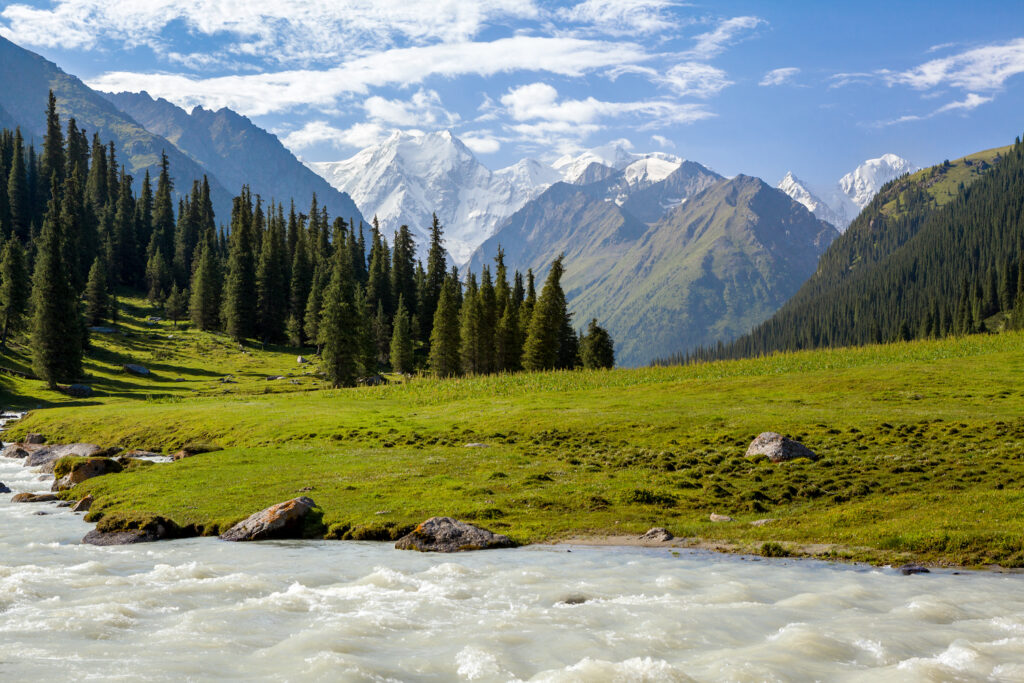Four Countries Eagerly Embracing Tourism
As the global tourism landscape evolves, several countries are stepping up their efforts to attract travelers, especially in the wake of a summer marked by protests against overcrowding in popular destinations. While European hotspots like Venice and Barcelona grapple with tourist saturation, lesser-known nations are actively inviting visitors to experience their rich cultures and natural wonders.
Greenland: An Adventure Awaits
With the opening of a new international airport in Nuuk, Greenland is set to enhance its tourism appeal significantly. The current reliance on small planes from Kangerlussuaq, a former military base, will shift as larger aircraft can directly land in the capital. This transformation not only improves access for tourists but also facilitates the import and export of goods vital for the local economy.
- Focus Areas:
- Adventure tourism: whale watching, hiking, and camping on the Greenland Ice Sheet.
- Year-round tourism: including stargazing and Northern Lights watching.
Visit Greenland’s Tanny Por emphasizes a balanced approach to tourism, aiming for a positive contribution to society while promoting sustainable growth. Cabin accommodations designed for optimal aurora viewing showcase the country’s commitment to year-round tourism.
Morocco: A World Cup Boost
As Morocco prepares to co-host the 2030 World Cup, it sees a prime opportunity to enhance its tourism infrastructure. The target is ambitious: to double tourist arrivals to 26 million by 2030, necessitating the addition of around 100,000 hotel beds across the country. High-profile hotel chains are already responding to this need with new developments to accommodate football fans.
- Key Destinations:
- Fez: Known for its vast medina and cultural heritage.
- Agadir: A popular spot for sun-seekers.
- Rabat: The political heart of Morocco, undergoing renovations.
Barbara Podbial, a Morocco specialist, notes the positive changes tourism has brought to Marrakesh, where the cleanliness and safety have noticeably improved. Efforts are focused on enhancing lesser-visited cities to distribute tourism more evenly.
Serbia: A Journey into Hidden Gems
While bordering Croatia, which experiences significant tourist traffic, Serbia is developing a sustainable tourism model focused on rural and ecotourism. The country aims to promote experiences that encompass its natural beauty and cultural richness without succumbing to mass tourism pressures.
- Cultural Highlights:
- Novi Sad: Known for impressive Hapsburg architecture and the renowned Petrovaradin Fortress.
- Mountain tourism: Offering activities like skiing in winter and hiking in summer.
George Colvin-Slee, a specialist in Serbian travel, emphasizes the region’s potential and the growing appreciation for the positive role of tourists in local communities, contributing to the economy and creating jobs.
Georgia: A Nation on the Rise
Stretching along the Black Sea coast, Georgia is keen to attract diverse visitors, focusing on improving its infrastructure and accessibility for tourists. The government’s 10-year development plan includes enhancing international signage and public transportation to create a welcoming environment.
- Tourism Experiences:
- Rich history: Featuring old fortresses, unique cave towns, and exquisite culinary traditions.
- Outdoor adventures: Access to stunning mountains and UNESCO sites.
Natalie Fordham, a Georgia specialist, highlights Tbilisi as a vibrant capital with much to offer, including its charming streets and rich cultural history, making it an enticing destination for travelers seeking new experiences.
| Country | Focus Areas | Tourism Goals |
|---|---|---|
| Greenland | Adventure and Year-Round Tourism | Sustainable Growth |
| Morocco | Cultural and Sports Tourism | 26 million visitors by 2030 |
| Serbia | Rural and Ecotourism | Sustainable Development |
| Georgia | Cultural and Outdoor Experiences | Infrastructure Improvement |
Each of these nations is poised to transform its tourism sector, offering unique experiences that are not just economically beneficial but also contribute positively to local cultures and communities.

